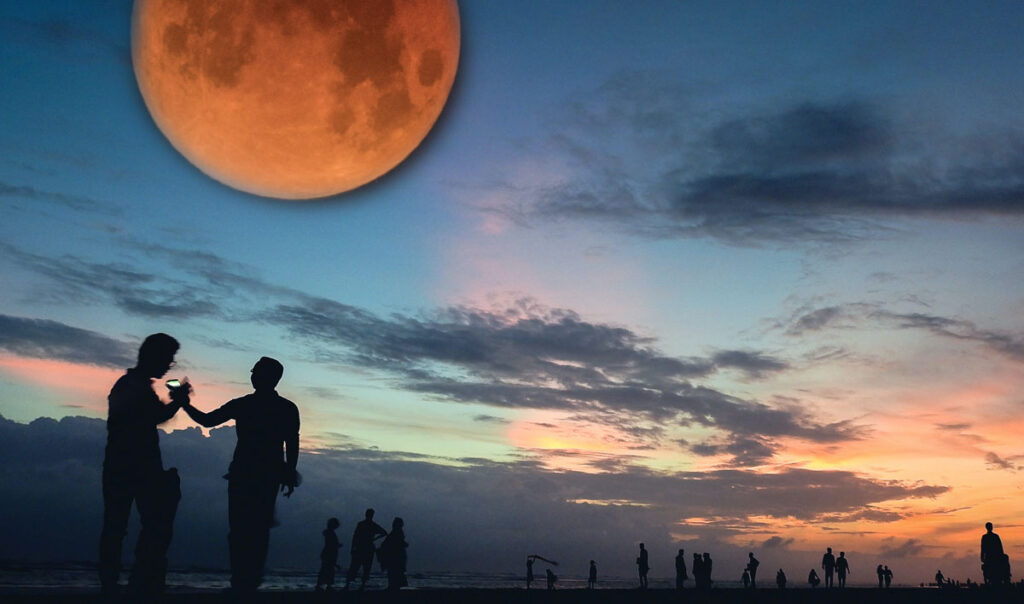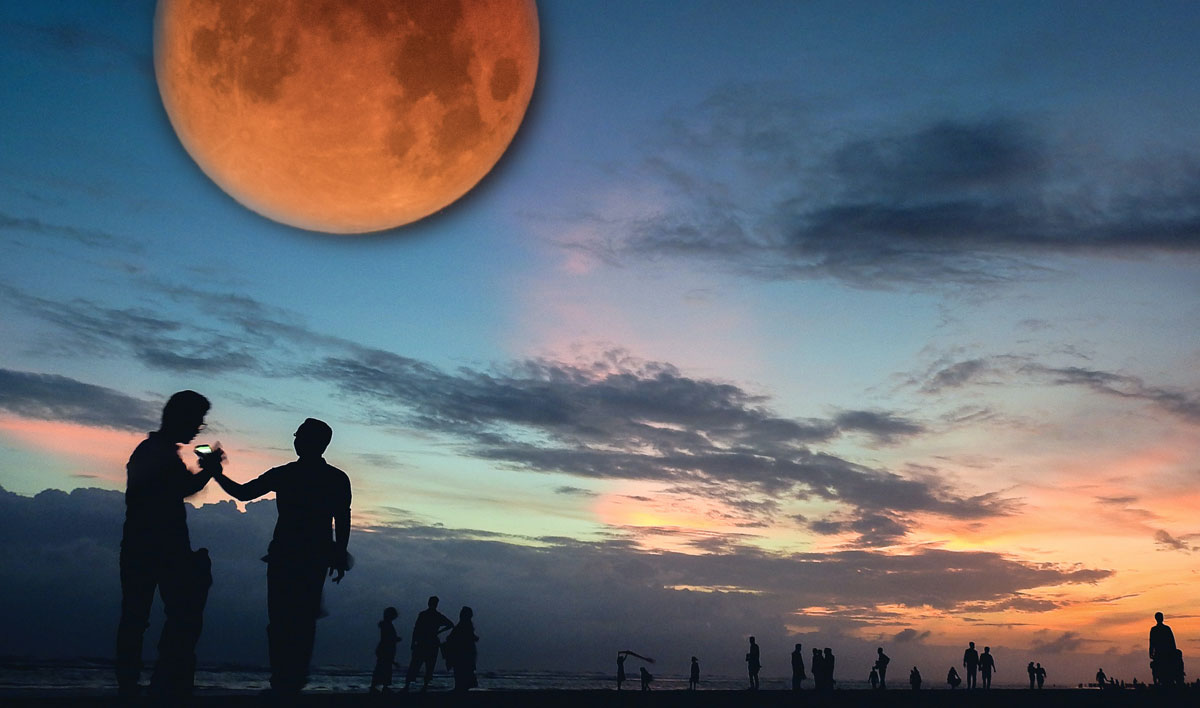
Above: Photo Credit Lynxotic collage with Photo by Sadman Sakib on Unsplash
Visible in the Western U.S. states early Wednesday
This kickoff to the Lunar eclipses for the year will be the fantastically named “Super Flower Blood Moon”. Although the visibility during the eclipse will vary across the nation, the west coast will have a great, bright vantage, where clear skies oblige.
Also, unlike solar eclipses the Lunar variety is completely safe to view with the naked eye. Just watch your forecast as clouds vs. clear skies will be the determining factor when it comes to visibility.
The “flower” moniker is perhaps less significant than it sounds, but no less poetic. Call the flower moon due to that simple fact that it occurs in late May, coincident with the spring bloom.
Although there were four penumbral lunar eclipses in 2020, they were less spectacular that what is anticipated for the one we will get on May 26th. That’s because this month’s total lunar eclipse will have a more obvious darkening phases as the moon passes through the umbra, Earth’s inner, darker shadow.
The eclipse will be at least partly visible in the Americas, Australia, New Zealand and Asia, while the total phase will only be seen from some of these locations. In the case of North America, the eclipse’s total phase, the time during which the moon turns orange or red in color, will only be seen from the western U.S., British Columbia, Alaska and parts of western Mexico.
Alternatively, if the full Super Flower Blood Moon has got you curious but you are not in the ideal spot to view from your backyard, livestreams will be hosted by observatories and astronomers around the world.
The west coast is the best coast for this moon
The rest of North America will only see the first part of the eclipse before the moon will set in the western sky. There will still be something worth seeing but it will be a partial view of the entire event.
If you are in the Los Angeles area Wednesday morning these are points worth noting:
- Total duration: 4 hours, 6 minutes
- Penumbral begins: 1:47 a.m. Wednesday
- Partial begins: 2:44 a.m. Wednesday
- Full begins: 4:11 a.m. Wednesday
- Maximum: 4:18 a.m. Wednesday
- Full ends: 4:25 a.m. Wednesday
- Moonset: 5:52 a.m. Wednesday
If you are a photographer please be aware that the moon, at any time, is hard to capture without powerful telephoto lenses. A cell phone will retrieve an image but the distant orb will be far more visible with magnification.
Above: Photo Credit /Photo by João Luccas Oliveira on Unsplash
The moon has many meanings and astrologically the event is significant also
Any discussion of all things lunar, blood moons and eclipses would certainly be congruent with a taste of the astrological perspective. We have it on good authority that this will be a Sagittarius full moon. There haas been prognostication that this will be a very challenging and “difficult” full moon eclipse, there are also signs that it will mark triumphs for some in the career dept., even accolades and awards.
A “major project” could be coming to a happy conclusion. As is always the case with Full moon lunar eclipses, if things are unclear and seem oddly incomplete, waiting 30 days can often bring the resolution that you are awaiting.
- Sinéad O’Connor: An Unstoppable Force of Irish Music dies at 56
- LeBron James’ son “Bronny” Suffers Cardiac Arrest
- Underrated: Stephen Curry Biopic Live on Apple TV+
- Boffo Barbenheimer: Toy of Triumph and Top Bomb Flick Debut
- Elon Musk leaving Twitter (X-Corp) for… TikTok?
Find books on Money and many other topics at our sister site: Cherrybooks on Bookshop.org
Enjoy Lynxotic at Apple News on your iPhone, iPad or Mac.
Lynxotic may receive a small commission based on any purchases made by following links from this page
